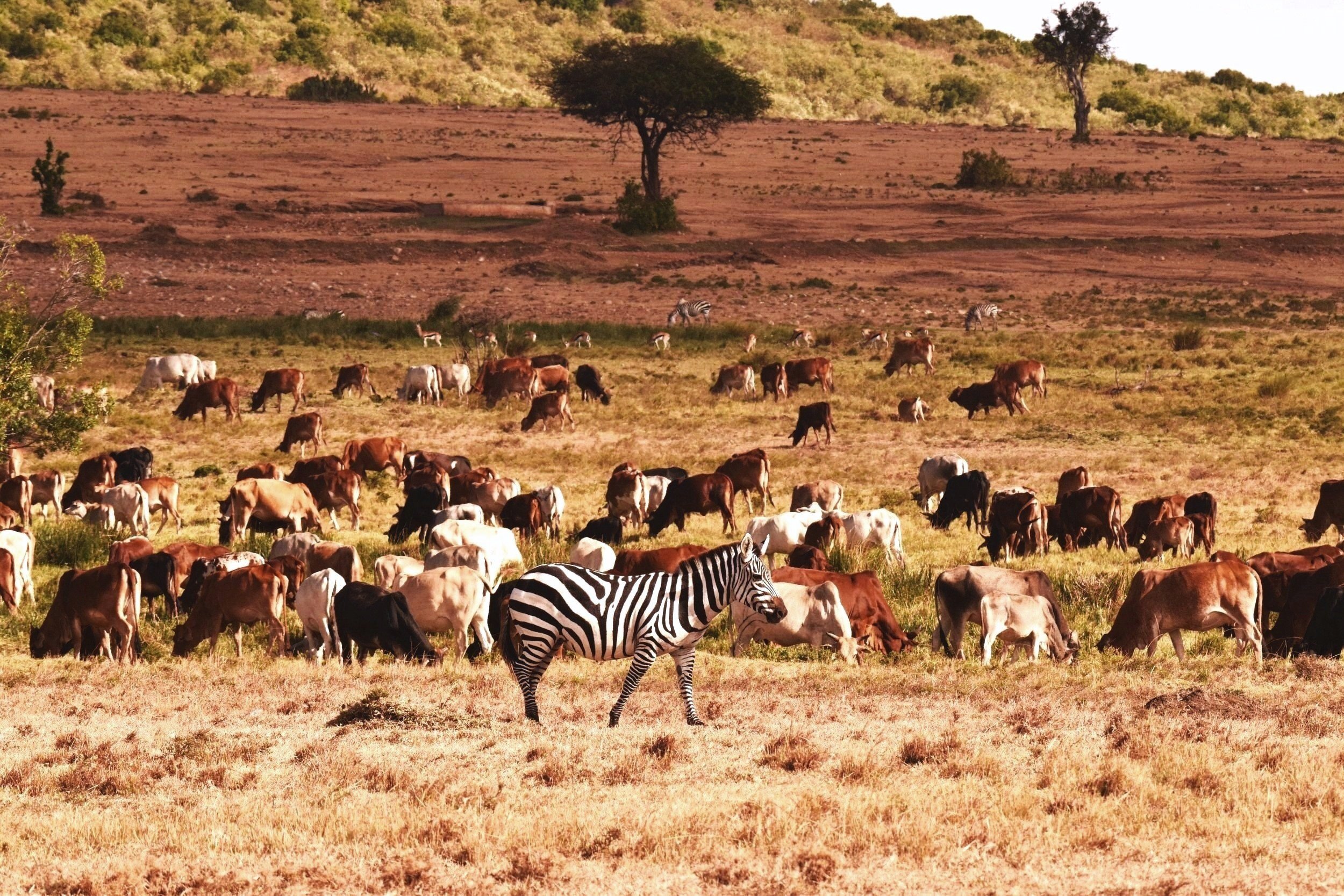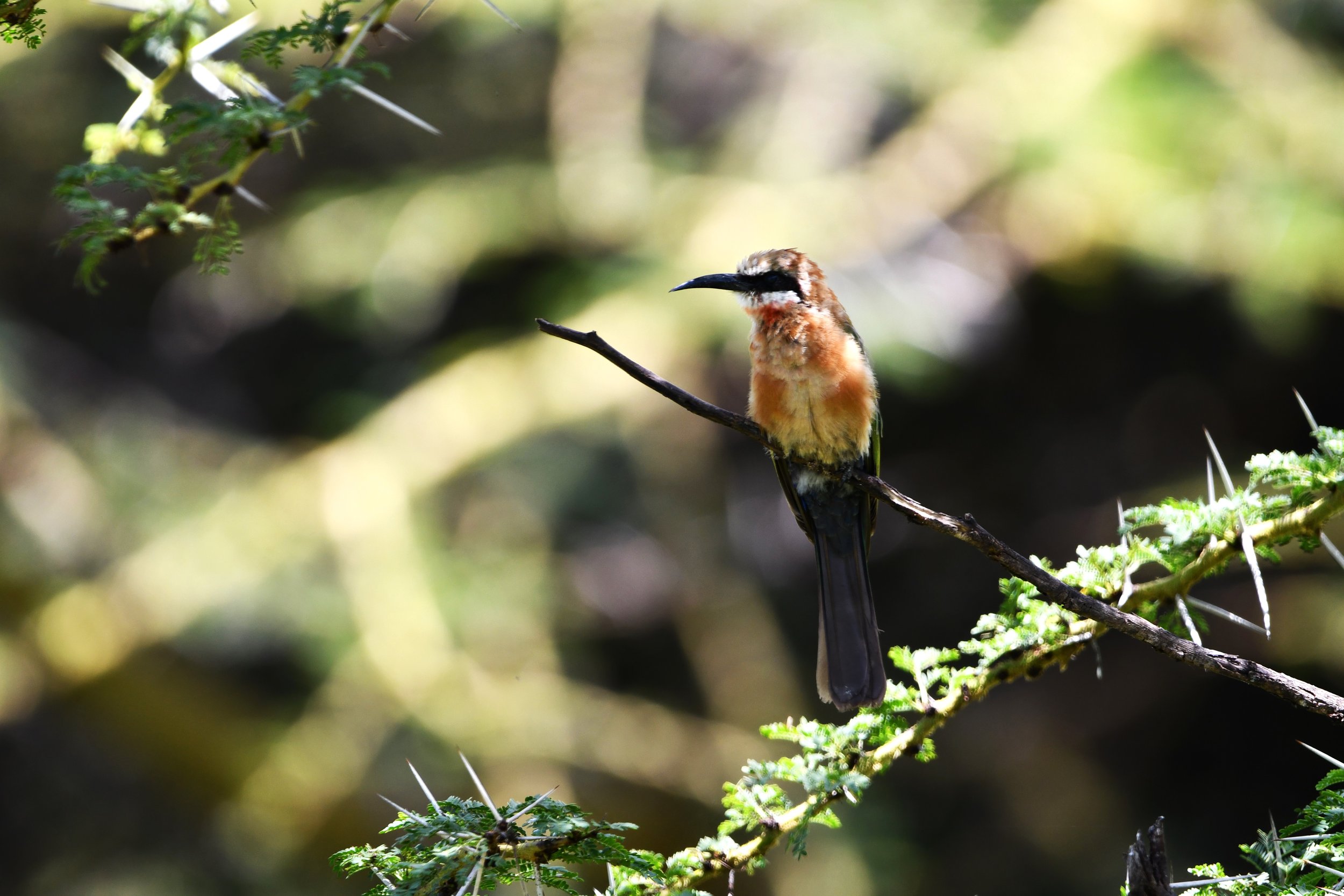
Protecting wildlife and community
The Enarau Conservancy is founded on an innovative science-based approach to the restoration and protection of its ecosystem, one enabled by a knowledgeable and experienced team, and supported by a range of partners.
The biodiversity value of Enarau Conservancy
An ideal ecological setting within which to conduct biodiversity monitoring and habitat restoration, Enarau Conservancy’s potential value - to the local community and to the wider Northern Mara Conservancies - as a thriving wildlife area is considerable.
Ideal conditions
The conservancy possesses the right conditions for development as a thriving wildlife destination and vital migratory corridor. Key factors include:
An altitude of between 1761 and 2034 metres and annual rainfall and temperature ranges of between 900 and 1400 millimetres and 12 and 27oC provide conditions ideal for the flourishing of a biodiverse habitat.
The soil composition is predominantly clay-rich black cotton soil. Its levels of organic matter content and soil reaction are sufficient for the growth of trees vital to the health and diversity of the conservancy.
A resultant mix of grasslands, forests, marshes, and mineral-rich springs provides for diverse species of plants and animals.
An all-year water source - its marsh, spring, and stream that discharges into the Mara River - can sustain considerable populations of resident and migratory wildlife.
Building blocks
Enarau Conservancy has a few established populations of wildlife, such as impalas, zebras, and a variety of bird species. The conservancy will build on the presence and behaviour of these populations to promote wildlife habitat connectivity, allowing animals in the Mara region to migrate more freely, particularly in response to localised rains.
Land Management
The conservation of Enarau Conservancy consists of creating a sustainable mixed-use land resource in three key interrelated ways:
The implementation of a comprehensive and far-reaching grazing plan.
Capitalising on the conservancy’s biodiversity to develop a thriving wildlife habitat.
The ongoing and future implementation of a series of research, training, eco-business development, and infrastructure projects.
The Conservancy Management Plan
The Conservancy Management Plan has been developed for the conservancy as a means of introducing and promoting sustainable land use practices that balance the needs of conservation, research, and human activities.
The Management Plan includes a grazing plan, which outlines five different land use zones:
-
A strict conservation zone with minimal human and livestock access has been established to maintain an area in the conservancy that is healthy and intact at all times, even in extreme drought conditions, thereby protecting the wildlife.
-
A buffer zone was established surrounding the core conservation area where holistic controlled grazing is permitted, ensuring that livestock husbandry is conducted in harmony with wildlife conservation.
-
A designated area of 136 hectares of ex-arable land, a wetland, and other degraded sites have been set aside for restoration and research purposes. Additionally, a research centre is currently (2024) being developed to provide a space for scientists and researchers to stay and work while working in the area.
-
Certain areas have been designated as community resource accessibility zones, where the community can access clean and safe water for drinking and domestic use. In addition, a salt lick site has been set aside to provide livestock with access to salt and is open to community members for one week every month.
-
In a recently established (2024) wildlife corridor that connects Enarau and Mbokishi conservation areas, we plan to identify and develop a cultural heritage site - Enarau Cultural Centre - that showcases the region's rich history and traditions and which will involve local communities in the management and preservation of their cultural heritage. Our goal is to provide an opportunity for visitors to learn about the area's cultural significance and for the local community to benefit from sustainable tourism.

Land management programmes
The plan includes various programmes that combine conservation and restoration efforts, community well-being initiatives, and research and technology projects.
Conservation and restoration
These programmes seek to protect and restore ecological processes that provide biodiversity services to the local community. The management will ensure that habitat connectivity and degraded habitats are restored, viable populations of threatened wildlife populations are maintained, and human-wildlife coexistence is promoted while conflicts are proactively minimised. Key actions focus on:
Initiating new and supporting existing habitats.
Securing wildlife corridors.
Developing and implementing grazing management plans.
Supporting the Enarau Human-Wildlife Coexistence Committee.
Preventing retaliatory wildlife killing.
Eradicating and controlling invasive species.
Research and technology
We are implementing biodiversity tracking and analysis programmes using modern technology - including GPS collars, camera traps, drones, and bioacoustics - to monitor movement, population dynamics, behaviour, and health.
Community wellbeing initiatives
We aim to collaborate closely with the local community, governmental agencies, NGOs, and stakeholders to implement various programmes that support sustainable livelihoods, provide access to critical services, and preserve culture. These initiatives include:
Developing alternative sources of income, such as eco-tourism and handicraft production.
Conducting training workshops for alternative livelihood skills.
Organising healthcare services, such as health camps and mobile clinics through partner organisations.
Plans to provide partial scholarships through bursaries.
Assisting women and youth groups in enhancing milk, honey, and fodder production.
Moreover, we plan to create a cultural centre that will enable visitors to explore and experience the Maasai’s cultural heritage, such as traditional ceremonies, storytelling, and crafts.
Partnerships and collaboration
The aforementioned programmes are linked to partnerships and collaboration. We aim to:
Form partnerships with local and international conservation organisations, governments, academic institutions, and other stakeholders.
Seek financial and technical support from donors, NGOs, and the private sector to strengthen conservation, research, technology, and community development efforts.
Collaborate with neighbouring conservancies and protected areas to create a connected and environmentally sustainable landscape.
Current and future projects
The Conservancy is conducting and planning many research, training, eco-business development, and infrastructure projects.
Current projects
Enarau is currently (2024) working on a variety of projects aimed at assisting the natural recovery of the area. These initiatives are research projects that are driven by data and focused on taking action. They include:
Studying vegetation succession, soil health, and the management of invasive species like Cocklebur and Santa-Maria or whitetop weed.
Developing three-dimensional models of eroded gullies as prediction tools for water flows and to help guide restoration efforts.
Monitoring wildlife dynamics, movement patterns, and changes in vegetation cover.
Educating the community about the importance of wildlife, leasing land for proper grazing management, and conducting 24-hour ranger patrols to combat illegal activities.
Future projects
Enarau has a strategic plan in place that outlines future projects. It includes:
The development of community infrastructure for water and health.
Establishing a cultural centre to promote tourism and generate income. Livelihood training programs are offered in beadwork, milk value addition, fodder production, entrepreneurial skills, and support for projects such as honey production.
Restoration of degraded sites and adaptive research initiatives to meet changing needs.
Developing a black rhino sanctuary.
Developing a tourist model to help finance leases, research, operations, and community projects.
Securing more land for conservation through income-generating projects such as carbon and biodiversity credits.








